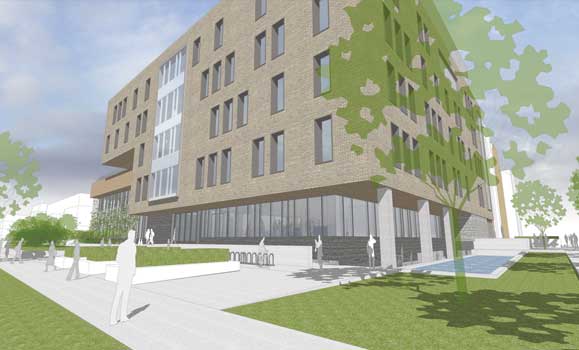From the latest magazine.
Imagine you have recently suffered a stroke. Finally well enough to be discharged from hospital, youâre assessed and given instructions by several different health professionals to help you on the road to recovery. But the information may be complex. Youâre tired and anxious to go home. And youâre also confused about how it all fits together, who youâll see for follow-up â and maybe even who to ask for clarification.
Now picture leaving the hospital after being treated by a single team of health professionals who collaborate to provide you with one discharge report organized according to your lifestyle goals, whether thatâs being able to eventually walk up and down the front steps, put the groceries away or drive your car.
Thatâs the kind of shift in treatment that patients can expect to experience as a result of a new approach to interprofessional health education underway at HÂş».
âWe often hear from people that their care is fragmented and not everybody knows whatâs going on with them,â says Anne McGuire (MHAâ92), president and CEO, IWK Health Centre. âWe tend to practice medicine, nursing and physiotherapy in silos and patients and families have suffered because of that.â
That siloed approach is one that HÂş»âs health education faculties are committed to changing as they embark on a range of initiatives designed to encourage interprofessional collaboration. Those initiatives will come to fruition fully through a new health education centre designed to foster and enhance interprofessional training, a $45-million building for which fundraising is being undertaken through the Bold Ambitions campaign.

Design mockup of the Interprofessional Health Building.
Will Webster, dean of Health Professions, says the research is clear: outcomes improve when you have teams working with patients and families instead of individuals interested only in the outcomes of their own field. Dr. Webster says one of the keys to interprofessional health education is getting students to learn âwith, from and about one another.â
Itâs an approach also encouraged by Health Canada, which in a 2007 report concluded âthe success of primary health care reform in Canada depends largely on the ability to grow and sustain collaborative care and teamwork as the new âcultural normâ for Canadians.â
Bridging disciplines in teaching and training
Intimately familiar with the benefits of shared goals and collaborating, Anne Godden-Webster, a speech-language pathologist by profession, is the interprofessional experience coordinator with the Faculty of Health Professions. Ms. Godden-Webster says interprofessional health education teaches students how to work together through overlap in curricula, shared case studies and lab work, and real-world collaborations during practicum placements in district health authorities in Nova Scotia and across the Maritimes.
HÂş»âs Faculty of Health Professions, which is comprised of eight schools and one college, is the most profession-diverse health sciences faculty in Canada, training close to 2,500 students in just under 20 different professional programs. Along with the Faculties of Medicine and Dentistry, it is already educating the next generation of collaborative health professionals according to the National Interprofessional Competency Framework of the federally funded Canadian Interprofessional Health Collaborative, which focuses on areas including interprofessional communication, patient/client/family/community-centered care and collaborative leadership among other areas.
Such training includes having students participate in a number of interprofessional collaborative learning experiences, of which at least one is during a practicum placement. During practicums, students from different health professions work together on a patient case then present their teamwork and key learnings to faculty and staff at the corresponding district health authority.
A state-of-the-art facility
The campaign will allow the faculties to take that preparation to the next level. âBold Ambitions is probably the biggest push to making interprofessional health training a reality, especially with our interprofessional health education building,â says Tom Boran, dean of Dentistry.
The 100,000-square-foot, $45-million building, to be built on the corner of University and Summer Streets, will support interprofessional health education through state-of-the-art classrooms designed to support collaborative learning, tutorial labs, common lounges and eating areas, library facilities, and an enhanced learning resource centre with clinical simulations.
An additional $25 million will fund chairs in health informatics, medical education, nursing and collaborative practices, pharmacy and business, and oral health research. It will also support three funding programs: the interprofessional health internship fund, rural communities program and an oral health endowment.
That emphasis on rural communities is of particular importance, says Dr. Webster. The programâs focus on collaboration and rural communities is key to transforming the health care system. As well, rural institutions can be ideal training grounds because they are simpler to navigate and their smaller size can make collaboration easier. Ìı
âThe entry-to-practice scholarships and rural bursaries the Bold Ambitions campaign will help fund will provide tuition scholarships and travel and accommodation bursaries to students participating in practicum placements in rural areas,â says Dr. Webster.
With fundraising efforts well underway, HÂş» expects to break ground on the new building in the coming year with an anticipated date of completion in 2015.
This article is part of the HÂş» Difference series, exploring what the power of philantrophy means to the university and introducing and showcasing some of the 50 innovative projects in development. Learn more at .
Ìı

